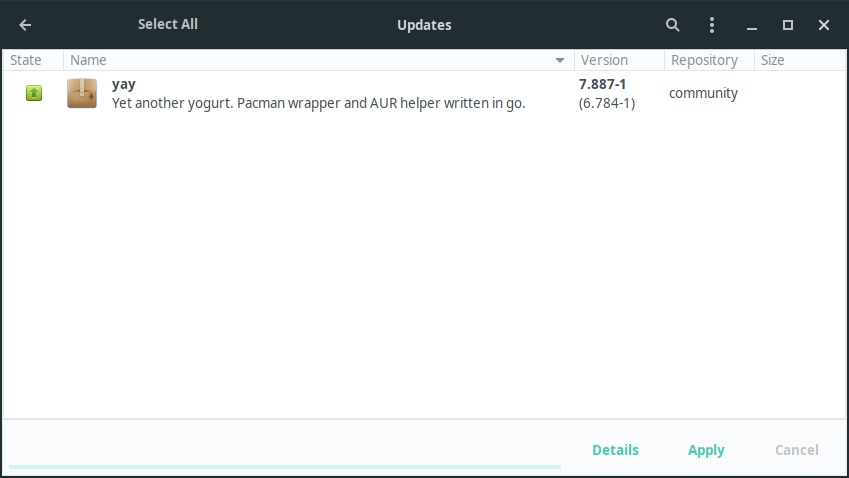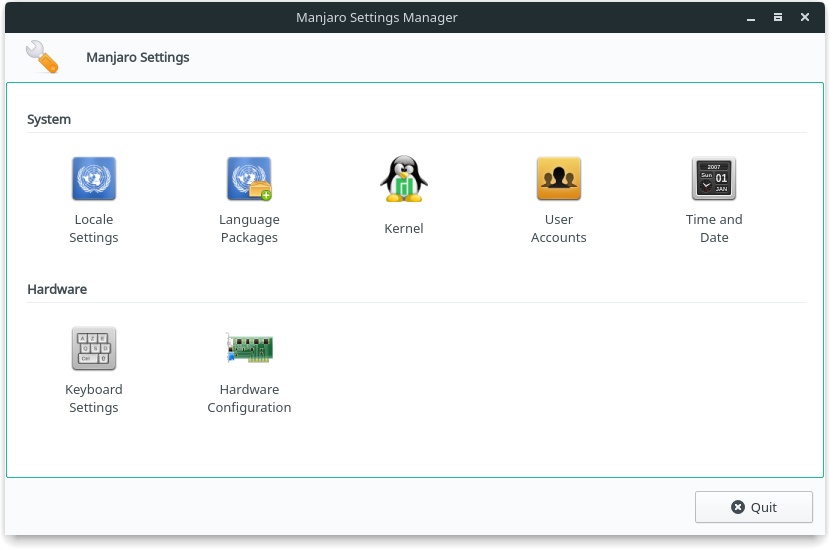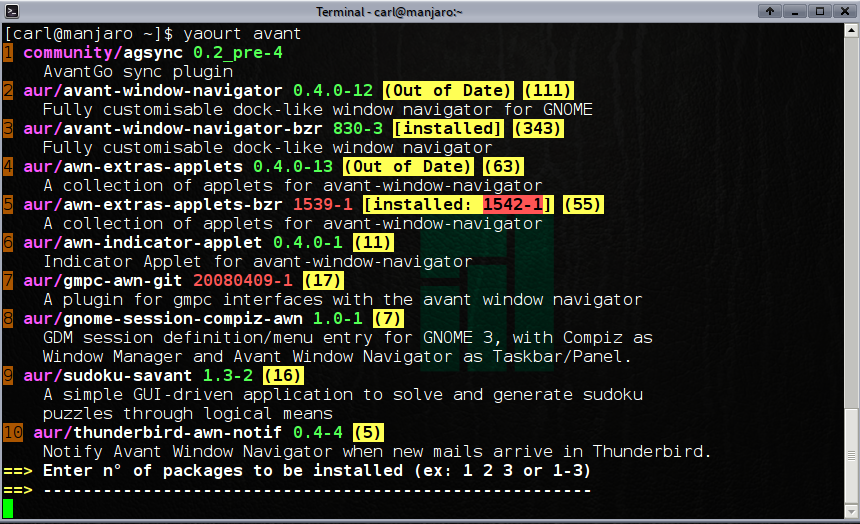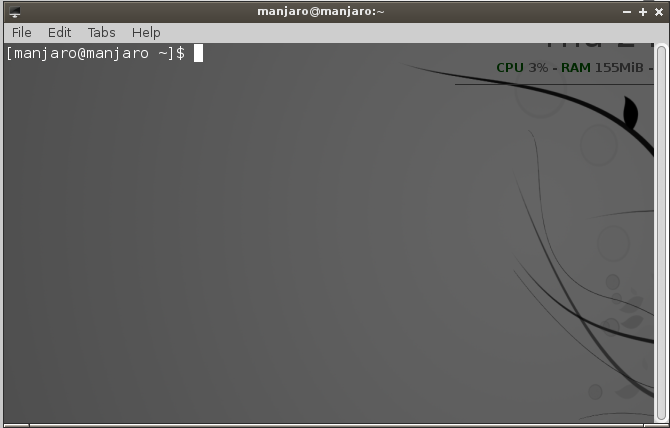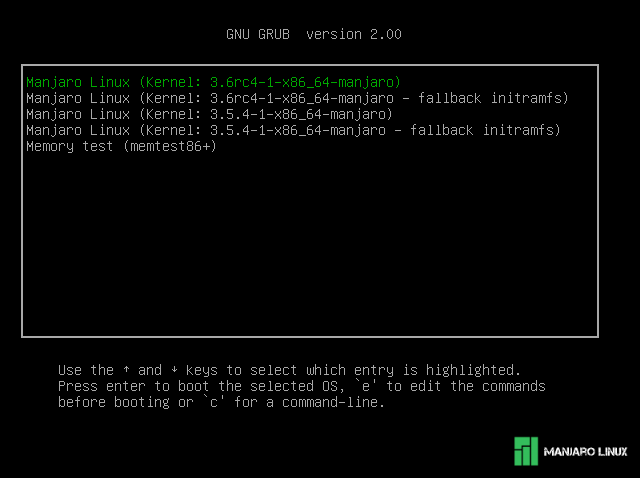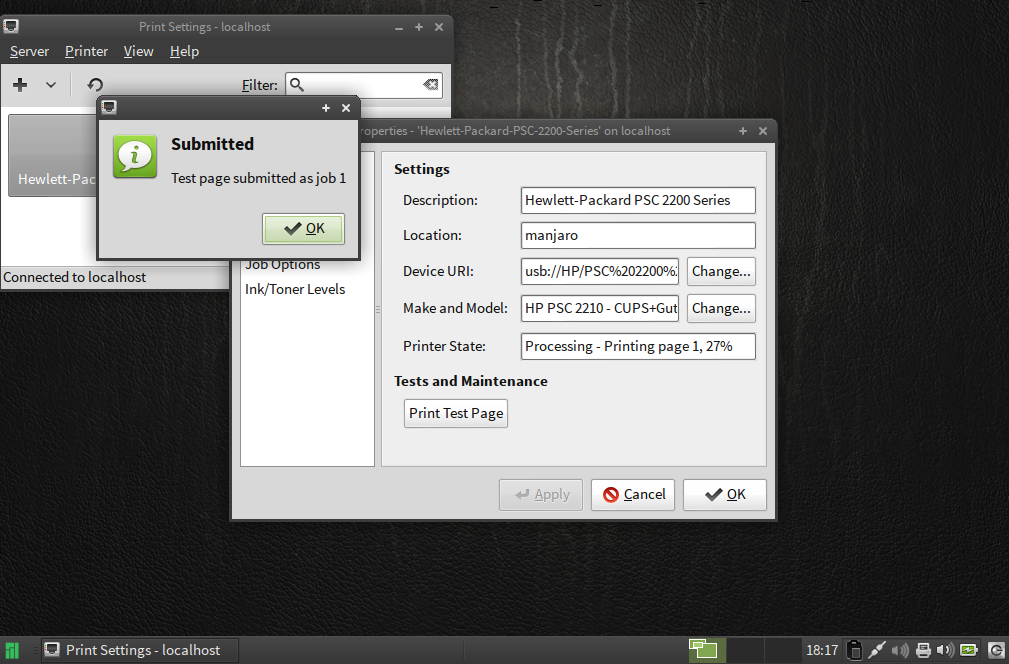Difference between revisions of "Using Manjaro for Beginners/zh-cn"
Views
Actions
Namespaces
Variants
Tools
(Created page with "===软件更新和管理使用添加/删除软件(pamac-manager)=== Pamac,在菜单中添加/删除软件,是manjaro的图形软件管理器。 "添加/删除 软件“是...") Tags: Mobile web edit Mobile edit |
(Updating to match new version of source page) |
||
| (2 intermediate revisions by the same user not shown) | |||
| Line 4: | Line 4: | ||
本指南简要的概述了充分利用Manjaro操作系统所需要的一些关键知识点。 | 本指南简要的概述了充分利用Manjaro操作系统所需要的一些关键知识点。 | ||
<div class="mw-translate-fuzzy"> | |||
===软件更新和管理使用添加/删除软件(pamac-manager)=== | ===软件更新和管理使用添加/删除软件(pamac-manager)=== | ||
Pamac,在菜单中添加/删除软件,是manjaro的图形软件管理器。 | Pamac,在菜单中添加/删除软件,是manjaro的图形软件管理器。 | ||
| Line 14: | Line 15: | ||
* '''更新软件包''',单击选项卡,查看你的选择,然后单击应用,'''Pamac 更新程序'''将会自动检查和通知你任何可用的系统更新。 | * '''更新软件包''',单击选项卡,查看你的选择,然后单击应用,'''Pamac 更新程序'''将会自动检查和通知你任何可用的系统更新。 | ||
使用Pamac的完全指南[[Pamac|here]]. | 使用Pamac的完全指南[[Pamac|here]]. | ||
</div> | |||
=== | <div lang="en" dir="ltr" class="mw-content-ltr"> | ||
You can also search graphically by Categories, Groups, and Repositories. Searching by Categories allows you to find software related to a certain category, e.g. Music & Audio, Utilities, Development, etc. Searching by Groups allows you to find software related to a certain group, e.g. manjaro-tools. Searching by Repositories allows you to find software in a certain repository, e.g. core, extra, community, or multilib. | |||
|1|4}} | |1|4}} | ||
{{FlexSideContainerTemplate|[[File:Screenshot_pamac_update.png|thumb|left|375px]]| | |||
A checkbox next to the package name will indicate whether it is installed or not. | |||
{{FlexSideContainerTemplate|[[File: | * '''To install a package''', click the adjacent checkbox to mark it for installation. | ||
* '''To install | * '''To remove an installed package''', click the adjacent checkbox to mark it for removal. | ||
* '''To | Once package boxes have been marked and/or cleared, you may undertake more searches before clicking the Apply (check mark) button to conform your choice(s). It really is that simple! | ||
* '''To | * '''To update packages''', click the Updates tab, look over your selections, then click Apply | ||
A full guide | The '''Pamac Updater''' will automatically check and notify you of any available system updates. | ||
A full guide to using pamac is available [[Pamac|here]]. | |||
|1|4}} | |1|4}} | ||
</div> | |||
</div> | |||
<div lang="en" dir="ltr" class="mw-content-ltr"> | <div lang="en" dir="ltr" class="mw-content-ltr"> | ||
| Line 57: | Line 58: | ||
===Using the Terminal=== | ===Using the Terminal=== | ||
{{FlexSideContainerTemplate|[[file:terminal-88.png|thumb|left|375px]]| | {{FlexSideContainerTemplate|[[file:terminal-88.png|thumb|left|375px]]| | ||
In simple terms, a terminal (or console) is an interface that allows for text commands to be entered and displayed. As it is an exceptionally powerful and versatile tool to use, Arch and other Arch-based systems are notable for relying far more heavily on | In simple terms, a terminal (or console) is an interface that allows for text commands to be entered and displayed. As it is an exceptionally powerful and versatile tool to use, Arch and other Arch-based systems are notable for relying far more heavily on its use than other (user-friendly) distributions such as ''Ubuntu'' or ''Mint'', which have placed a greater focus on the use of Graphical User Interfaces (GUI). | ||
</div> | </div> | ||
<div lang="en" dir="ltr" class="mw-content-ltr"> | <div lang="en" dir="ltr" class="mw-content-ltr"> | ||
Although GUIs | Although GUIs do undertake many common tasks that have been provided with Manjaro, particularly to assist new users -- just as with other user-friendly distributions -- it may on occasion be necessary to use the terminal to get something done. '''Most of the guides contained in the wiki rely on using the terminal, particularly where solving problems and tweaking the system is concerned'''. For those users who wish to learn more about how Manjaro works, and for those who wish to take full advantage of its versatility, it is highly recommended to learn how to use the terminal. Don't worry: it's not that hard or scary, and this wiki can be used to guide you every step of the way. | ||
|1|4}} | |1|4}} | ||
</div> | </div> | ||
| Line 68: | Line 69: | ||
===Using Multiple Kernels=== | ===Using Multiple Kernels=== | ||
{{FlexSideContainerTemplate|[[file:kernel_select.png|thumb|left|375px]]| | {{FlexSideContainerTemplate|[[file:kernel_select.png|thumb|left|375px]]| | ||
The Linux kernel is the core of a Linux operating system. It acts as an interface between your computer's hardware and the applications that run on it. Manjaro not only supports the use of multiple kernels (selectable from the boot screen), but allows easy access to the very latest, bleeding edge kernels as well. All available kernels installed on your system will be presented upon booting up, including | The Linux kernel is the core of a Linux operating system. It acts as an interface between your computer's hardware and the applications that run on it. Manjaro not only supports the use of multiple kernels (selectable from the boot screen), but allows easy access to the very latest, bleeding-edge kernels as well. All available kernels installed on your system will be presented upon booting up, including back-up copies of each kernel version installed. If sub-menus are in effect, you will need to press Enter on the second item of a set. | ||
</div> | </div> | ||
<div lang="en" dir="ltr" class="mw-content-ltr"> | <div lang="en" dir="ltr" class="mw-content-ltr"> | ||
Having most supported kernels available means you have the ability choose from having bleeding-edge kernel updates or sticking with a stable LTS kernel. No matter what kernel you choose, you will still get access to the latest applications. | Having most of the supported kernels available means you have the ability choose from having bleeding-edge kernel updates or sticking with a stable LTS kernel. No matter what kernel you choose, you will still get access to the latest applications. | ||
</div> | </div> | ||
| Line 86: | Line 87: | ||
Full instructions on installing the necessary software are provided in the '''[[Printing]]''' guide. | Full instructions on installing the necessary software are provided in the '''[[Printing]]''' guide. | ||
|1|4}} | |1|4}} | ||
</div> | </div> | ||
[[Category:Contents Page{{#translation:}}]] | [[Category:Contents Page{{#translation:}}]] | ||
Latest revision as of 05:21, 2 October 2025
欢迎来到Manjaro!
本指南简要的概述了充分利用Manjaro操作系统所需要的一些关键知识点。
软件更新和管理使用添加/删除软件(pamac-manager)
Pamac,在菜单中添加/删除软件,是manjaro的图形软件管理器。 "添加/删除 软件“是一个非常简单而且强有力的工具,可以为你的系统添加和删除软件包(应用)。启动时,它将自动检查官方的Manjaro存储库中是否有新的和可更新的软件。完成之后,只需要输入你要安装或移除的软件或简单描述,然后按下查找按钮。 与你的搜索相匹配的所有已安装和可用的软件便会展示在你屏幕的右侧。单击任何结果的名称便可以在下面立即查看有关它的更多信息。 软件名旁边的复选框将会表明它是否已经被安装。
- 安装软件包,单击相邻的复选框将它标记为安装。
- 删除已安装的软件包,单击相邻的复选框将它标记为移除.
当软件包被标记或者清除, 你可以进行更多的搜索直到你点击(检查标记)应用按钮去确定你的选择.就是这么简单!
- 更新软件包,单击选项卡,查看你的选择,然后单击应用,Pamac 更新程序将会自动检查和通知你任何可用的系统更新。
使用Pamac的完全指南here.
You can also search graphically by Categories, Groups, and Repositories. Searching by Categories allows you to find software related to a certain category, e.g. Music & Audio, Utilities, Development, etc. Searching by Groups allows you to find software related to a certain group, e.g. manjaro-tools. Searching by Repositories allows you to find software in a certain repository, e.g. core, extra, community, or multilib. |1|4}}
A checkbox next to the package name will indicate whether it is installed or not.
- To install a package, click the adjacent checkbox to mark it for installation.
- To remove an installed package, click the adjacent checkbox to mark it for removal.
Once package boxes have been marked and/or cleared, you may undertake more searches before clicking the Apply (check mark) button to conform your choice(s). It really is that simple!
- To update packages, click the Updates tab, look over your selections, then click Apply
The Pamac Updater will automatically check and notify you of any available system updates. A full guide to using pamac is available here.
Your package manager will list the dependencies required for software packages in the information pane. For example, as illustrated, if the VLC Media Player were to be installed, then several other software packages --such as to allow it to play different media formats-- would also be automatically be downloaded if not already installed on the system. Without them, the Media Player would not be able to play certain media formats, or perhaps not be able to play anything at all!
Manjaro Settings Manager
The Manjaro Settings Manager offers you GUI settings, which are either enabled by Manjaro (i.e. installation of multiple kernels and easy installation of non-proprietary and proprietary graphics drivers) or are missing from at least some of the popular Desktop Environments and Window Managers. Manjaro Settings Manager is under development and might offer even more settings in the future than illustrated on the left.
Adding Printing Capabilities
It is easy to add printers in Manjaro. Full instructions on installing the necessary software are provided in the Printing guide.
